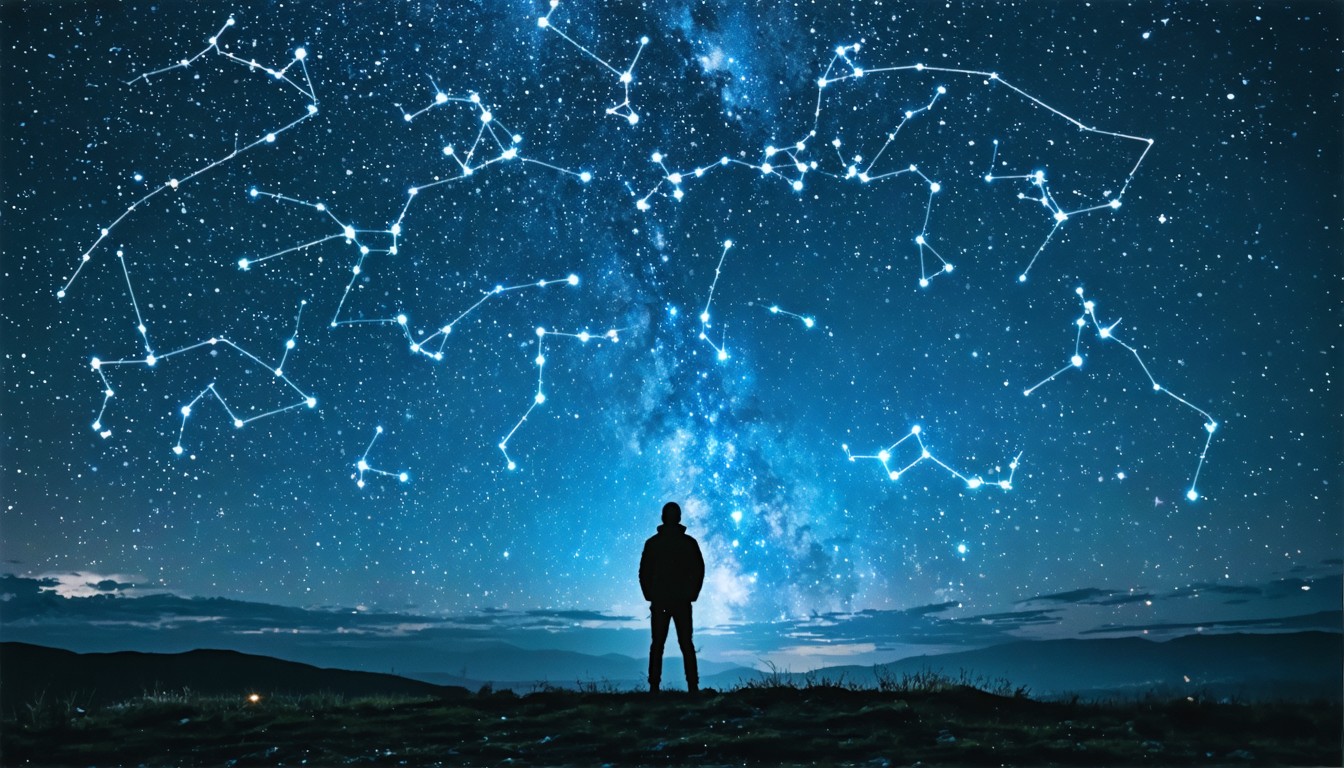Ever wondered about the influence of the stars on your personality? Discovering your zodiac sign is the first step to understanding your astrological profile. This guide will walk you through the process of finding your sign based on your birth date. We will delve into the meaning behind each sign, exploring their unique characteristics and how they impact your life. Let’s embark on this celestial journey!
Decoding the Zodiac Calendar Finding Your Sun Sign
Unlocking your cosmic identity often begins with answering the fundamental question, “What’s my zodiac sign?” The answer lies within the zodiac calendar, a system that maps the Sun’s apparent journey across the sky over the course of a year. Imagine a circular band encompassing the Earth, through which the Sun appears to travel. This band, known as the zodiac, is divided into twelve equal segments, each associated with a specific constellation that was prominent in that segment thousands of years ago. Modern tropical astrology, which is the most commonly used system, uses fixed date ranges that correspond to the Sun’s position relative to the vernal equinox (the start of spring in the Northern Hemisphere), rather than the current location of the constellations themselves, which has shifted over centuries due to the Earth’s axial precession.
Each of these twelve segments is assigned a zodiac sign, representing a distinct energy and set of characteristics. As the Sun progresses through these segments during the year, it spends approximately 30 days in each sign. Your Sun sign is simply the zodiac sign the Sun was transiting at the exact moment you were born. It is the most widely recognized and fundamental component of your astrological profile, often considered the core of your identity and conscious self.
Here are the twelve zodiac signs and their general date ranges:
- Aries: March 21 – April 19
- Taurus: April 20 – May 20
- Gemini: May 21 – June 20
- Cancer: June 21 – July 22
- Leo: July 23 – August 22
- Virgo: August 23 – September 22
- Libra: September 23 – October 22
- Scorpio: October 23 – November 21
- Sagittarius: November 22 – December 21
- Capricorn: December 22 – January 19
- Aquarius: January 20 – February 18
- Pisces: February 19 – March 20
It’s important to note that these dates are approximate and can vary slightly from year to year, sometimes by a day, depending on factors like leap years. If your birthday falls on one of the transition days, you might find yourself on the “cusp” between two signs. For example, someone born on March 20th or March 21st might wonder if they are a Pisces or an Aries. This is a common source of confusion. While some believe that being born on the cusp means you inherit traits from both adjacent signs, technically, the Sun is only ever in one sign at a time. The transition point is precise down to the minute. Someone born minutes before the Sun enters Aries is still Pisces, and someone born minutes after is Aries. While the exact characteristics associated with cusp births are debated among astrologers, the core Sun sign is determined by the Sun’s exact position.
For the purpose of determining your Sun sign, your birth date is the crucial piece of information. You simply look up which zodiac sign the Sun was in during that date range. While the precise time of your birth is essential for calculating a complete astrological birth chart – which includes the position of the Moon, planets, rising sign (ascendant), and house placements, providing a much more detailed and nuanced picture of your personality and life path – it is not necessary for finding your Sun sign. The date alone suffices to pinpoint the Sun’s general location in the zodiac calendar and identify your primary astrological sign. Your Sun sign provides the foundational energetic blueprint, outlining your core motivations, ego drives, and general way of expressing yourself in the world. While just one piece of the puzzle, it’s the starting point for understanding the cosmic influences that shape your individuality.
Exploring the Elements and Modalities Understanding Astrological Traits
Now that you’ve identified your Sun sign, the sign the Sun occupied at the precise moment of your birth, you hold the key to understanding a fundamental aspect of your core identity and life force. While this sign serves as the primary lens through which your essential self is expressed, its characteristics are further defined and nuanced by two key groupings: the four elements and the three modalities. Think of the element as the fundamental energy or temperament of your sign, and the modality as its mode of operation or approach to interacting with the world. Understanding these layers provides deeper insight into the underlying drives and behaviors associated with your Sun sign, offering a more comprehensive picture than just the sign name alone.
Astrology categorizes the twelve zodiac signs into four classical elements: Fire, Earth, Air, and Water. Each element governs a group of three signs and represents a distinct kind of energy and perspective.
Fire signs are known for their energy, passion, enthusiasm, and directness. They are often action-oriented, optimistic, and can be impulsive. This element relates to inspiration, ego, and a drive for self-expression. The Fire signs are Aries, Leo, and Sagittarius. Keywords for Fire energy include: Action, Enthusiasm, Inspiration, Courage, Passion, Confidence, Drive.
Earth signs are grounded, practical, reliable, and focused on the material world and tangible results. They value stability, security, and sensuality. This element is associated with patience, structure, and the physical realm. The Earth signs are Taurus, Virgo, and Capricorn. Keywords for Earth energy include: Stability, Practicality, Reliability, Sensuality, Patience, Structure, Grounding.
Air signs are intellectual, communicative, social, and objective. They thrive on ideas, information exchange, and connection. This element is associated with thought, rationality, and social interaction. The Air signs are Gemini, Libra, and Aquarius. Keywords for Air energy include: Thought, Communication, Connection, Objectivity, Ideas, Rationality, Social.
Water signs are emotional, intuitive, sensitive, and compassionate. They are deeply connected to feelings, intuition, and the subconscious. This element relates to empathy, nurturing, and the inner world. The Water signs are Cancer, Scorpio, and Pisces. Keywords for Water energy include: Feeling, Intuition, Empathy, Compassion, Nurturing, Sensitivity, Subtlety.
In addition to the elements, the zodiac signs are also grouped into three modalities: Cardinal, Fixed, and Mutable. These modalities relate to where the signs fall within the season and describe how the sign expresses its elemental energy – whether it initiates, stabilizes, or adapts.
Cardinal signs are the initiators, the starters. They begin the seasons (Aries starts spring, Cancer summer, Libra autumn, Capricorn winter) and are characterized by their drive to start projects, take action, and lead. They are energetic and ambitious. The Cardinal signs are Aries, Cancer, Libra, and Capricorn. Keywords for Cardinal energy include: Initiation, Leadership, Action, Ambition, Starting, Drive.
Fixed signs fall in the middle of the seasons (Taurus in spring, Leo in summer, Scorpio in autumn, Aquarius in winter). They are the stabilizers and maintainers. They resist change, are determined, persistent, and loyal, focusing on consolidating and building upon what has been started. The Fixed signs are Taurus, Leo, Scorpio, and Aquarius. Keywords for Fixed energy include: Stability, Persistence, Determination, Concentration, Resistance, Consolidation.
Mutable signs end the seasons (Gemini ends spring, Virgo summer, Sagittarius autumn, Pisces winter). They are the adapters, the changemakers, and disseminators. They are flexible, versatile, and analytical, excellent at transitioning and sharing information. The Mutable signs are Gemini, Virgo, Sagittarius, and Pisces. Keywords for Mutable energy include: Adaptability, Flexibility, Transition, Analysis, Dissemination, Versatility.
Every single one of the twelve zodiac signs is a unique combination of one element and one modality. For instance, Aries is Fire/Cardinal, embodying the initiation of action and enthusiasm. Taurus is Earth/Fixed, representing stable and persistent practicality. Gemini is Air/Mutable, signifying adaptable and versatile communication. Cancer is Water/Cardinal, showing initiating and nurturing emotion. This pairing of element and modality creates the distinct behavioral profile and essential nature of each sign, providing a foundational layer of understanding beyond just the sign’s general reputation. By identifying your Sun sign’s element and modality, you gain significant insight into your core energy (element) and how you tend to approach life and express that energy (modality), offering a deeper glimpse into the astrological DNA of your most prominent sign placement. However, while the Sun sign is a crucial piece and is significantly colored by its element and modality, it is by no means the entire story of your astrological makeup.
Beyond the Sun Sign Delving Deeper into Your Astrological Profile
Understanding your Sun sign, as we’ve explored through the lens of elements and modalities, provides a foundational insight into your core identity and general disposition. It’s the most widely known aspect of astrology, often synonymous with “your zodiac sign.” However, astrology is a vast and intricate system, and the Sun sign represents just a single, albeit significant, piece of a much larger cosmic puzzle. To truly begin unlocking your astrological profile and understanding the unique nuances of your personality, motivations, and life path, you need to look beyond the Sun and delve into the complexities of your entire birth chart.
Your birth chart is a cosmic snapshot of the sky precisely at the moment and location of your birth. It shows the positions of the Sun, Moon, and all the planets within the twelve zodiac signs and twelve astrological houses. Each of these placements adds a layer of meaning, creating a multidimensional portrait of who you are. While the Sun sign illuminates your fundamental drive and conscious identity, other celestial bodies reveal different facets of your being.
Chief among these other critical points are the Moon sign and the Rising sign, also known as the Ascendant. Your Moon sign is determined by the position of the Moon at the exact time of your birth. If your Sun sign is about your conscious purpose and outer expression of identity, your Moon sign delves into your inner world – your emotional nature, your instincts, your subconscious reactions, and your deepest needs for security and comfort. It reveals how you process feelings, what you need to feel nurtured, and often represents the part of you that is most evident in private, intimate relationships or when you are feeling vulnerable. While your Sun sign might describe the kind of person you aspire to be or feel you are fundamentally, your Moon sign describes how you feel on the inside and what you need emotionally to thrive. Understanding your Moon sign can help you make sense of seemingly contradictory feelings or reveal the hidden emotional currents beneath your outward personality.
Equally pivotal is the Rising sign, or the Ascendant. This is the zodiac sign that was rising on the Eastern horizon at the precise moment and location of your birth. Unlike the Sun and Moon signs which are solely dependent on date and time, the Ascendant also requires your exact birth location. The Rising sign is your mask or filter through which you first interact with the world and through which the world first perceives you. It governs your initial impressions, your spontaneous reactions, your outward appearance, and how you initiate things. It’s the face you show before people get to know the deeper layers of your Sun or Moon. While your Sun sign is your core identity and your Moon sign is your inner emotional self, your Rising sign is the packaging – the immediate persona, the way you walk, talk, and present yourself. It significantly influences your first encounters and how you project your energy into the environment. Someone might have a fiery Aries Sun, suggesting boldness and directness, but if their Rising sign is cautious Taurus, their initial approach might be much slower and more grounded than expected.
Beyond the Sun, Moon, and Ascendant, a complete birth chart includes the positions of Mercury (communication, intellect), Venus (love, values, aesthetics), Mars (energy, drive, action), Jupiter (expansion, luck, beliefs), Saturn (discipline, challenges, structure), and the outer planets Uranus, Neptune, and Pluto (generational influences, unconscious patterns, transformation). Each planet in a specific sign and astrological house adds more texture and detail, describing different areas of life and aspects of personality – from how you think and communicate to how you pursue goals, handle relationships, and navigate challenges.
Therefore, while knowing your Sun sign is a fantastic starting point for self-exploration, it is merely the tip of the iceberg. A full birth chart provides a nuanced, intricate tapestry that accounts for the multifaceted nature of human personality. It explains why two people with the same Sun sign can be so different and helps to reconcile the complexities and apparent contradictions within yourself. Delving into your Moon sign, Rising sign, and planetary placements offers a much richer and more complete understanding of your astrological profile and, by extension, yourself.
To embark on this deeper journey, the first step is to generate your full birth chart. This requires your exact date, time (as precise as possible, including AM/PM), and location of birth. You can find many reliable resources online that offer free birth chart calculations simply by inputting this information. For a truly comprehensive understanding and interpretation of your chart’s intricate details and how all these elements interact, consulting a professional astrologer is highly recommended. They can provide personalized insights and guidance based on the unique pattern of your cosmic blueprint. Exploring these other significant points in your chart will undoubtedly provide a more profound and layered perspective on your unique place in the cosmos.
Conclusions
Discovering your zodiac sign is an enlightening journey into self-awareness. While your Sun sign offers a foundational understanding of your personality, remember that it’s just one layer of your astrological identity. Exploring your Moon sign, Rising sign, and the interplay of elements and modalities will enrich your understanding of yourself and your place in the cosmos. Dive deeper, and let the stars guide you!


